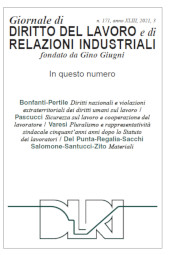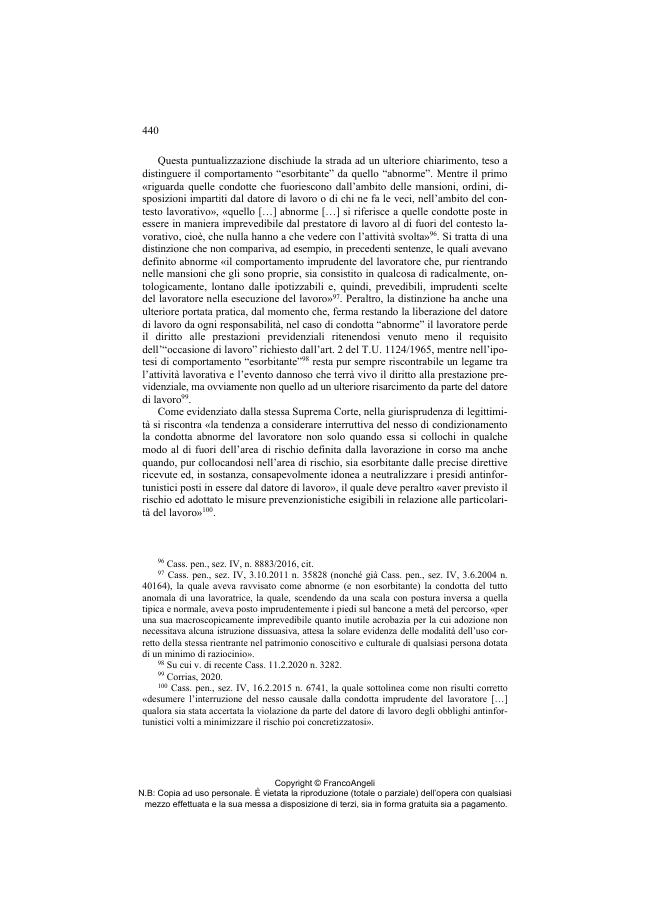Sicurezza sul lavoro e cooperazione del lavoratore
421-458 p.
Il saggio analizza il particolare ruolo del lavoratore in tema di sicurezza sul lavoro, destinatario della disciplina di tutela ma anche soggetto obbligato a cooperare con il datore di lavoro per rendere efficiente il sistema di prevenzione aziendale. Dopo aver evidenziato il carattere doveroso e non solo oneroso della cooperazione creditoria del lavoratore e le ricadute di tale posizione sul piano del contratto di lavoro e dell'esercizio dei poteri datoriali, l'autore esamina le previsioni del d.lgs. 81/2008 sugli obblighi di sicurezza del lavoratore per poi passare a ricostruire i principali orientamenti della giurisprudenza in merito alle responsabilità di un infortunio di cui il lavoratore sia stato artefice o coartefice, soffermandosi in particolare sulla questione della configurabilità del concorso di colpa del lavoratore.
Infine, soffermando l'attenzione su due recenti sentenze della Corte di Cassazione che limitano le ipotesi del concorso colposo del lavoratore a causa della prevalenza delle violazioni del datore di lavoro, propone di rileggere la questione alla luce delle norme del d.lgs. 81/2008 che responsabilizzano il lavoratore come parte attiva del sistema di prevenzione. [Testo dell'editore].
The essay analyzes the peculiar role of the worker in terms of safety at work. Indeed, the worker is both passive beneficiary of the protective regulations and actor obliged to cooperate with the employer to make the company prevention system efficient. After having highlighted the dutiful and burdensome nature of the worker's credit cooperation and the respective consequences on both the employment contract and the exercise of the employer's powers, the author examines the provisions of Legislative Decree no. 81/2008 on the worker's safety obligations. Subsequently, he reconstructs the main orientations of the jurisprudence regarding the responsibilities for an accident caused partially or completely by the worker, focusing in particular on the configurability of the joint fault of the worker.
Finally, the essay addresses two recent rulings of the Court of Cassation that limit the hypothesis of the employee's concurrence of fault due to the prevalence of violations by the employer and offers a different understanding of the issue, based on the provisions of Legislative Decree no. 81/2008, which empowers the worker as an active part of the prevention system. [Publisher's text].
-
Articoli dello stesso fascicolo (disponibili singolarmente)
-
Informazioni
Codice DOI: 10.3280/GDL2021-171003
ISSN: 1972-5507
MATERIE
PAROLE CHIAVE
- Salute, Sicurezza, Lavoro, Lavoratore, Obblighi, Responsabilità
- Health, Safety, Work, Worker, Obligations, Responsibility



